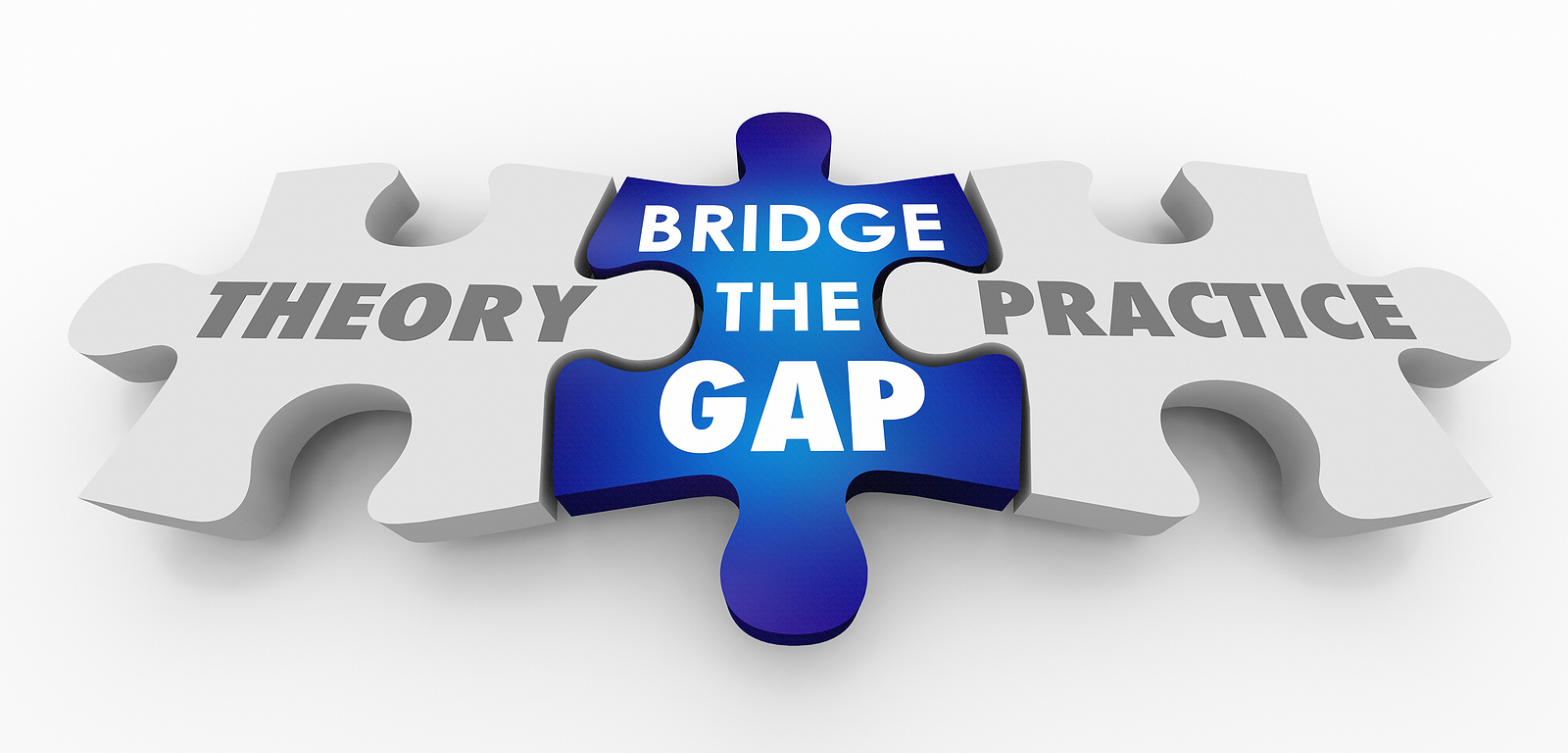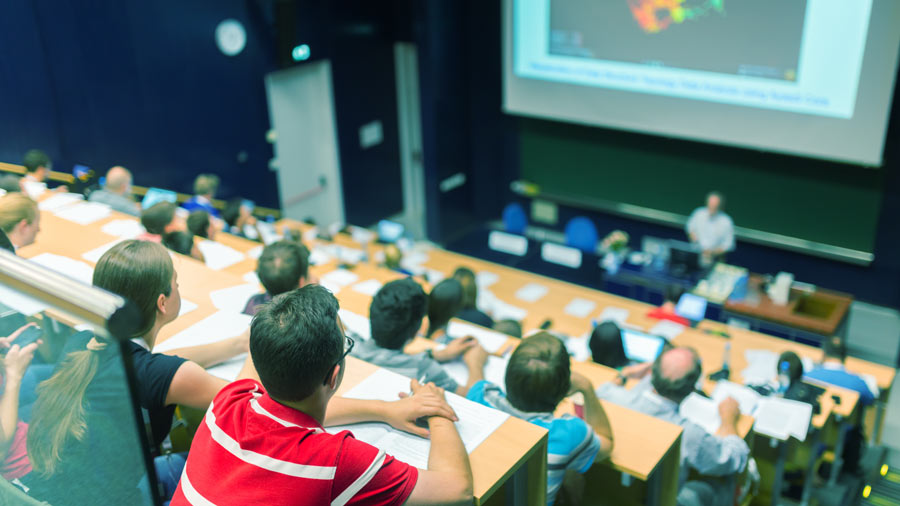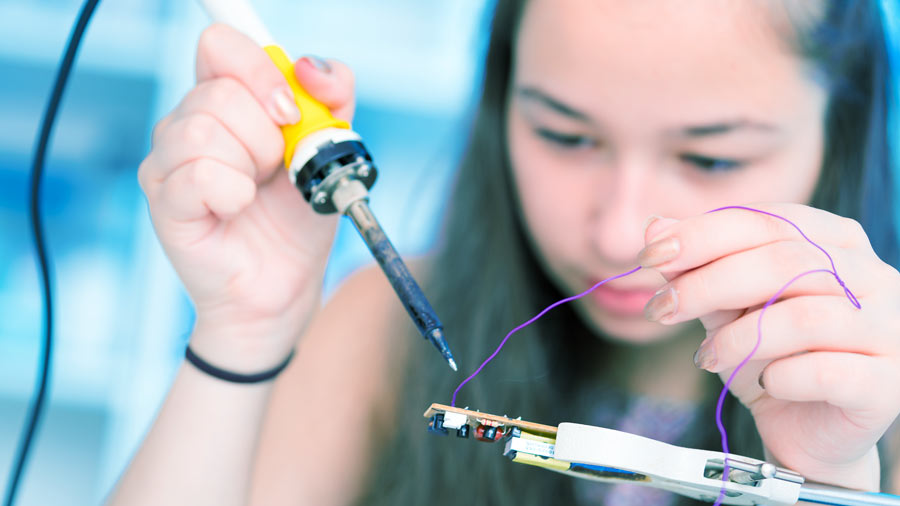Extended Reality (XR) has become an umbrella term covering all forms of immersive reality that combine the virtual and real worlds – Virtual Reality (VR), Augmented Reality (AR) and Mixed Reality (MR). XR offers a unique sense of presence where the real and the simulated combine [1]. It makes sense to distinguish among these modes in terms of how they can be used in student learning and what their different strengths are [2], but in this short article, XR will be used as a way of generalising the potential to shift engineering education away from the lecture-based transmission of second-hand knowledge [3], [4], to a more balanced combination of first- and second-hand information [5], thereby bridging the gap between theory and practice.
It is a common complaint that higher education in general [6], including engineering [7], has become too dependent not just on transmitted second-hand knowledge, but a separation of first- and second-hand knowledge. Harvard Physicist, Eric Mazur, indicates that one of the results of this dependence on second-hand knowledge is that students can pass tests but be unable to apply physics in the real world. This is both a matter of how the learning takes place and more crucially, how it is assessed [8].
For Vujanovic [4], first-hand knowledge comes from direct experience and perception, whereas we gain second-hand knowledge through being told by others. The traditional lecture, for example, is largely based on second-hand knowledge, even if it contains live demonstrations. Second-hand knowledge is, of course, important. It includes theories and formulas that cannot always be derived from direct everyday experience, and conceptualisation. But both direct experience of the world and exploration, analysis and reflection of that experience are essential for understanding and for the ability to use what we learn [9]. The problem is that formal education has tended to be biased towards the retelling and testing of second-hand knowledge divorced from direct experience.
What might it mean to bridge the gap between theory and practice? And how can XR achieve this? Lauritsen [7] claims that in the past, engineers had a more practical background that gave them a kind of experiential framework into which the second-hand or theoretical knowledge could fit – a kind of apprenticeship model where the practical is foregrounded. At present, this is not the case at most universities. Furthermore, at universities the process is reversed, so that all the second-hand knowledge is foregrounded in a lecture and the practical work follows.
XR, however, is not just about providing the missing (virtual) first-hand knowledge through lifelike experiences. To be used by a learner, XR must be designed. It requires form and functionality. It can therefore provide both the virtual first-hand experience and the tools to enable learners to explore, analyse and reflect, fusing theory and praxis in a single learning experience.
Take, for example, the ability to explode the parts of a 3D model and understand the relationship of the parts. Such a feature is part of the XR design. First the learner can experience the model in its three-dimensionality, rotate it, resize it, and perhaps project it into the real environment at life size. Then s/he can explode it, reconstruct it, look inside, learn about different materials and see the interaction of parts. All this can often be done on mobile devices, bringing both the psychological presence of the object – that is, the sense of it as “real” – as well as its analysis together.
One of the intentions of this paper is to conceptualise the use of XR in engineering education as a means of bridging the gap between theory and practice, leading to better learning transfer when students encounter real-world situations and problems that require the agile application of the learning. But this has implications for how we measure the effectiveness of XR.
It has been found to improve performance in engineering and improve motivation [11]. But it is important not simply to compare the outcomes of an XR intervention in student learning with control groups by using inappropriate assessment. A 2019 study from the University of Copenhagen [12] found that when three groups of students learning laboratory safety were compared, one learning with desktop VR, one with immersive VR and one with a conventional lab safety manual, all groups were about equal on their factual knowledge. But this is not the appropriate measure. Instead, when the students were put into a high-stakes real context, a laboratory where they had to solve genuine safety problems, the immersive VR students outperformed the other groups. In other words, the better measure of learning is real-world performance, not multiple-choice factual questions. and it is here that difference in the kind of learning undertaken show up.
What this study does suggest is that the immersive VR learning can lead to bridging the gap between theory and practice through the experience of (virtual) first-hand knowledge.
Especially in the time of Covid-19, which has probably changed the way we practice higher education substantially, XR allows students to gain (virtual) first-hand experience, combined with second-hand knowledge, from remote locations. It allows students to join in collaborative learning, being present simultaneously in the same virtual space, but from remote locations. This gives structure and focus to collaborative learning. It can improve the efficiency and quality of the design and prototyping process. It allows students to enter high-risk situations safely or environments that would normally be difficult or impossible to access. It can make high-cost machinery that can be scaled to life size available on their mobile devices.
In short, XR can provide engineering students with (virtual) first-hand experiences that provide a learning environment closer to the way we learn best – through doing.
References
[1] A.O.J. Kwok and S.G.M. Koh, “COVID-19 and Extended Reality (XR)”, Current Issues in Tourism, 2020. DOI: 10.1080/13683500.2020.1798896
[2] K.T. Huang, C. Ball, J. Francis, R. Ratan, J. Bournis and J. Fordham, “Augmented versus virtual reality in education: an exploratory study examining science knowledge retention when using augmented/virtual reality mobile applications”, Cyberpsychology, Behavior and Social Networking, vol. 22, no. 2, pp. 105-110, 2019.
[3] E. Fricker, “Second-hand knowledge”, Philosophy and Phenomenological Research, Vol.73, no. 3, pp.592-618, 2006
[4] A. Vujanovic, “Second-hand knowledge” in Parallel Slalom: A Lexicon of Non-Aligned Poetics, B. Cvejić and G. S. Pristaš, Eds., Belgrade and Zagreb: TkH and CDU, Ch. 2, pp 120-129, 2014
[5] D. Davies and E. Lam, “The Role of First-hand Experience in the Development Education of University Students”, International Journal of Development Education and Global Learning, vol. 2, pp. 35-52, 2009.
[6] J. Gillett-Swan, “The challenges of online learning: supporting and engaging the isolated learner”, Journal of Learning Design, vol. 10, no.1, pp. 20-30, 2017.
[7] A.B. Lauritsen. “Bridging the gap between theory and praxis in engineering education”,
Paper presented at 8th International CDIO Conference, Brisbane, Australia, 2012.
[8] Montrose42, “Eric Mazur – current assessment models do little to advance the application of knowledge” Dec. 8, 2014, Accessed 1 March, 2021 https://montrose42.wordpress.com/2014/12/08/eric-mazur-current-assessment-models-do-little-to-advance-the-application-of-knowledge/
[9] D. Laurillard, Rethinking university teaching: a framework for the collective use of educational technology, Routledge, 1993.
[10] D. Kaminska, T. Sapinski, N. Aitken, A. della Rocca, M. Baranska and R. Wietsma, “Virtual reality as a new trend in mechanical and electrical engineering education”, Open Physics, vol.15, no.1, pp. 936-941, 2017.
[11] J.M. Gautierrez and M.D.M. Fernandez, “Applying augmented reality in engineering education to improve performance and motivation”, International Journal of Engineering Education, vol.30, pp 625-635, 2014.
[12] G. Makransky, S. Borre-Gude and R. E. Mayer, “Motivational and cognitive benefits of training in immersive virtual reality based on multiple assessments”, Journal of Computer Assisted Engineering, vol. 35, no.6, pp. 691-717, 2019.




